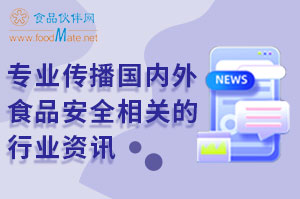食品伙伴网导读:欧盟食品安全局的ANS小组在对红色食品人工色素苋菜红(E123)评估结束后,标志着这个小组已对目前在欧盟各国中使用的所有偶氮食品色素的重新评估。苋菜红作为一种红色染料,可被用于开胃饮料以及鱼籽等食品的染色。在回顾了所有有效的毒理学数据后,该小组得到结论:该色素无遗传毒性(即不会损害细胞内的遗传物质),也非致癌物。并且最终确立0.15mg/kg体重为每日的允许摄入量(ADI)低于科学委员会于1984年确立的0-0.8mg/kg的标准,及FAO和WHO的0-0.5mg的标准。欲了解更多详情,请对原文进行阅读。

原文报道:
EFSA lowers ADI on amaranth, completing its re-evaluation of azo dye food colours
News Story 26 July 2010
The European Food Safety Authority’s scientific Panel on additives, the ANS Panel, has assessed the safety of the red food colour Amaranth (E123), completing the re-evaluation of all azo dyes[1] authorised for use in the European Union[2] . EFSA’s scientific advice will help to inform decisions of EU risk managers in relation to food additives.
Amaranth is a red azo dye colour which can be used to colour foods such as aperitif drinks and fish roe. After reviewing all available toxicological data, the Panel concluded that the colour is not genotoxic (does not damage the genetic material of cells) nor carcinogenic. The Panel set an Acceptable Daily Intake (ADI)[3] for the substance of 0.15 mg per kg body weight per day, lowering the ADIs previously established in 1984 respectively by the Scientific Committee on Food (0-0.8 mg/kg bw/day) and the Joint FAO/WHO Expert Committee on Food Additives (0-0.5 mg/kg bw/day).
The Panel notes that while the mean exposure of adults is far below the ADI, adults consuming regularly extremely high amounts of Americano (cocktail of vermouth and red aperitif mixer) and aperitif wine drinks containing the colour at the maximum permitted level might exceed the ADI 6 times[4] . Children’s exposure was estimated to be around 30 times lower than the ADI. The Panel calculated exposure to Amaranth on the basis of the maximum levels of use permitted or reported by industry[5] .
In line with the European Commission’s request, EFSA started with the assessment of colours as part of its ongoing re-evaluation of the safety of all food additives authorised for use in the EU. In particular, the European Commission asked EFSA to prioritise the assessment of azo dyes colours following publication of a study (McCann et al in 2007[6] ), suggesting a possible link between certain mixtures of colours(including five azo dyes) and the preservative sodium benzoate and hyperactivity in children.











 地区:
地区:






 鲁公网安备 37060202000128号
鲁公网安备 37060202000128号



